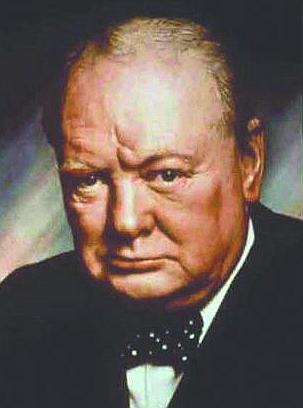This guy should star in Kill Bill 3. But he would probably be more effective working for Joel.
We’re guessing the out-takes run considerably longer than this clip.
Here we highlight selected innovation related articles from around the world on a daily basis. These articles related to innovation and funding for innovative companies, and best practices for innovation based economic development.
This guy should star in Kill Bill 3. But he would probably be more effective working for Joel.
We’re guessing the out-takes run considerably longer than this clip.
 Augusta National keeps one eye on history, the other on the future
Augusta National keeps one eye on history, the other on the future
If you asked any longtime observer to associate one word with the Masters Tournament, it would probably be "tradition."
Is there another sporting event in the world so bedecked with so many enduring traditions? From the legends who act as honorary starters, to the pimento cheese sandwiches to the green jackets and more.
Those are all enduring. But perhaps the most endearing tradition is the Par 3 tournament on Wednesday of Masters Week. Set amidst scenery too beautiful to be a painting, the Par 3 is an unequaled opportunity to see the world's greatest golfers in a competition so lighthearted that many have their smallest children or grandchildren finish the holes for them. It makes for great laughs and crowd roars approaching what you might expect for a player's hole-in-one.
![]() To question whether social entrepreneurs can achieve large-scale change is to doubt the existence of Florence Nightingale, Maria Montessori, William Wilberforce, Fazle Abed, Jimmy Wales, or the 2,700 Ashoka Fellows!
To question whether social entrepreneurs can achieve large-scale change is to doubt the existence of Florence Nightingale, Maria Montessori, William Wilberforce, Fazle Abed, Jimmy Wales, or the 2,700 Ashoka Fellows!
After all, what defines the true social entrepreneur is that he or she simply cannot come to rest in life until his or her vision has become the new pattern societywide. Scholars and artists are satisfied when they express an idea. Professionals are when they serve a client well, and managers are when their organization succeeds. None of this much interests the entrepreneur. The life purpose of the true social entrepreneur is to change the world.
Ashoka creates detailed life histories of every serious candidate it considers for election into its world community of leading social entrepreneurs. We have learned to look for this central, gyroscope-like quality because it is so predictive of who will ultimately meet our standard for election, which is to create at least continental-scale pattern change in an important field such as the environment or human rights. This gyroscope kicks in as far back as childhood and continues to define the social entrepreneur’s life decade after decade.
 Some people act as if they know it all. In reality when people “act” like they know it all they are acting out a part in life they wish they had.
Some people act as if they know it all. In reality when people “act” like they know it all they are acting out a part in life they wish they had.
Collaboration can be difficult because it is centric to people sharing knowledge about something or someone. The sharing of knowledge can sometimes create conflicts when some people sharing think they know it all.
Ever witnessed someone sharing something grounded in knowledge only to be confronted by someone who thinks they know more? It happens all the time and especially in the ecosystem of business.
The ecosystem of a business is built around the hierarchy of power by influence, not by knowledge. Just because someone carries the title of CEO or King doesn’t mean they know it all it just means they have more influence, power.
Vanderbilt and ICOS have been locked in an inventorship dispute for several years over patent rights to tadalafil, the active ingredient in Cialis. The University argues that its scientists should be listed as inventors on the patents because they provided provided the building-blocks that Glaxo used in its discovery of tadalafil. (ICOS now holds the patent rights).
The district court ruled against Vanderbilt – holding that the Vanderbilt researchers could not be inventors because they did not have an independent understanding of the "complete compound claimed." On appeal, the Federal Circuit rejected that misinterpretation of the law of joint inventorship, but affirmed the final holding based on its conclusion that Vanderbilt had not provided clear-and-convincing evidence that it contributed to the invention.
Most technology startups seem to be founded by three types of people: product managers, engineers or biz dev types (MBAs and the like). Very few of them are started, in my experience, by sales people and very few early stage companies really understand sales. That’s why I started the Sales & Marketing Series and at one point I will do a bunch of posts on the sales methodology we developed at my first company called PUCCKA.
Today I want to talk about sales executives and a model for thinking about them. If you ever have to interview, hire, judge the performance of, decide whether to promote, assign clients/regions to them or have to decide whether to fire sales people, I think having a framework for thinking about them is helpful.
 There are no direct financial fruits from merely owning a patent. There are a lot of patents and products which are lying useless in federally funded universities and research laboratories across the country. A patent or product must be adopted, purchased or leased by a corporation for development.
There are no direct financial fruits from merely owning a patent. There are a lot of patents and products which are lying useless in federally funded universities and research laboratories across the country. A patent or product must be adopted, purchased or leased by a corporation for development.
The Technology Transfer Agents are present to complete the cycle of innovation by bringing to the market, products and services resulting from federally funded research institutions. They are also considered the catalysts for innovation.
The only reason for being a transfer agent is to make federally funded research available to private industry, for discovering new applications for new inventions, technologies, and products. To return royalties and revenue back to the research agency.
 There was an interesting story in today's New York Times entitled China Again Hopes to Drive U.S. Rail Construction
There was an interesting story in today's New York Times entitled China Again Hopes to Drive U.S. Rail Construction
Nearly 150 years after American railroads brought in thousands of Chinese laborers to build rail lines across the West, China is poised once again to play a role in American rail construction. But this time, it would be an entirely different role: supplying the technology, equipment and engineers to build high-speed rail lines.
Specifically, Chinese companies have signed an agreement with California and GE to build the system using Chinese technology and Chinese banks would finance it.

Ceramic, glass and other small tech businesses, take notice! The National Academy of Science’s Board on Science, Technology and Economic Policy is hosting a free, day-long symposium on April 16, 2010 on getting the most from the federal Small Business Innovation Research program.
The meeting is organized around the theme, “Early-Stage Capital in the United States: Moving Research Across the Valley of Death and the Role of SBIR.” The STEP Board says meeting “will highlight the role of federal innovation programs, like SBIR and the Department of Commerce’s Technology Innovation Program… and will be complemented by an examination of some of the leading technology-based development programs underway at the state level.”
 Angel investors in Silicon Valley are nervously eyeing a bill in the U.S.
Senate, saying the legislation could crimp investments and harm
their industry.
Angel investors in Silicon Valley are nervously eyeing a bill in the U.S.
Senate, saying the legislation could crimp investments and harm
their industry.
The bill, proposed in March by Democratic Sen. Christopher Dodd of Connecticut, is designed to overhaul regulation of financial services companies and provide more consumer and investor protection.
But buried deep in the 1,336-page bill, sections 412, 413 and 926 have alarmed some valley angel investors, who sink their cash into young, unproven startup firms.
MUMBAI:
Early stage funding for promising start-up firms appears is set to
receive a
boost with local and foreign venture capital (VC) investors lining up investment
plans as the economic recovery gains strength both in India and
abroad.
Over 30 new VC funds have started putting money in start-ups
across various sectors such as clean technology, micro finance, rural
technology
and genomics apart from conventional segments, a marked contrast to the
bleak
days of 2007-08 when the global financial crisis hit these investors
hard.
The pace of economic recovery now coupled with factors such as
higher investment returns and easier exit options have triggered off
fresh
interest among both domestic and foreign VC firms to invest in India.
Amongst
foreign VC (FVC) firms, funds such as Artiman Ventures, BAF Spectrum,
ATEL
Ventures, Blue Orchard, Mercatus Capital and Foundation Capital have
already
made the initial investments in Indian start-ups.
 What's better than a volcano? A volcano with the Northern Lights
behind it.
What's better than a volcano? A volcano with the Northern Lights
behind it.
Photographer Albert Jakobsson took this awesome shot of Iceland's Eyjafjajokull (gesundheit) volcano. In the full series of photos, you can see Icelanders entertaining themselves by hanging out and roasting hot dogs on the glowing embers of the active, but "lazy", volcano.
 One of history's greatest quote machines, Winston Churchill, once said that success is based on going from failure to failure without a loss of enthusiasm. I'm going to borrow that quote today and apply it to innovation success. Innovation success is based on going from "failure" to "failure" without a loss of enthusiasm. Here's what I mean by that.
One of history's greatest quote machines, Winston Churchill, once said that success is based on going from failure to failure without a loss of enthusiasm. I'm going to borrow that quote today and apply it to innovation success. Innovation success is based on going from "failure" to "failure" without a loss of enthusiasm. Here's what I mean by that.
Probably the biggest roadblock to innovation in most firms is what I like to call the failure expectation. I've rarely been in any firm that didn't have any ideas (if so, go ahead and close up shop). I've rarely been in firms where people thought they weren't creative, and most firms have been "innovative" at some point in their history. This means that every firm has the opportunity to innovate and some experience at doing so successfully. What inevitably creeps in is the fear of failing - not just at innovation, but at any new change or experience. This fear of failure isn't relegated to innovation alone, but to any significant change. The two easiest ways to kill an idea are to trot out the old saws 1) "The last time we did that it (fill in the blank) or 2) "We've never done that before". Both of these statements, which you will hear in every firm that attempts to innovate, indicate that safety and comfort and status quo have become more important than discovering needs and changing as the market demands change.
 Solar power involves
wondrous quantum physics and materials
science, but its fate may hinge on whether contractors can learn to
bolt on the panels without losing too many screws. The panels
themselves account for only about half the cost of a solar array; the
rest is the installation and back-end
equipment. As panel makers slash their prices, the nuts
and bolts loom ever larger. Fortunately, a quiet revolution is now
underway in installation. Brendan Neagle, the chief operations officer
of Borrego
Solar, a major U.S. installer, says they've sped up installation by
40 percent over the past two years. Zep Solar has invented a new roof
mounting system, already supported by the module maker Canadian
Solar, that speeds things up by another factor of two. And Nat
Kreamer, president of Acro Energy, another large installer,
says they've streamlined the preparation work and can get a system up on
your roof within 30 days of your first phone call -- quite an
improvement on the eight
or so months it took me.
Solar power involves
wondrous quantum physics and materials
science, but its fate may hinge on whether contractors can learn to
bolt on the panels without losing too many screws. The panels
themselves account for only about half the cost of a solar array; the
rest is the installation and back-end
equipment. As panel makers slash their prices, the nuts
and bolts loom ever larger. Fortunately, a quiet revolution is now
underway in installation. Brendan Neagle, the chief operations officer
of Borrego
Solar, a major U.S. installer, says they've sped up installation by
40 percent over the past two years. Zep Solar has invented a new roof
mounting system, already supported by the module maker Canadian
Solar, that speeds things up by another factor of two. And Nat
Kreamer, president of Acro Energy, another large installer,
says they've streamlined the preparation work and can get a system up on
your roof within 30 days of your first phone call -- quite an
improvement on the eight
or so months it took me.
In fact, historically, most of the cost savings for solar power have come on the low-tech side. According to a Lawrence Berkeley Lab study last year, arrays in 1998 cost about $11 per watt of generating capacity: $5 for the modules themselves, $6 for the installation and equipment. By 2008 the modules have fallen by $1 per watt, the installation by $2. Prices have come down as installers have climbed up the learning curve. And there's clearly room for them to do even better. The study reported that arrays in Germany are $2 per watt cheaper than in the U.S. "Anything that is inefficient needs to be attacked," says Mike Miskovsky, the general manager of Canadian Solar.
 AUSTIN, Texas -- Feb. 28, 2010, was a banner day for Texas wind to
set the clouds -- and electrons -- flying.
AUSTIN, Texas -- Feb. 28, 2010, was a banner day for Texas wind to
set the clouds -- and electrons -- flying.
In the Panhandle, gusts reached 47 miles per hour and wind generators delivered a record 6,242 megawatts of power to Dallas, Austin and other population centers. At 1 p.m., 22 percent of all the electricity consumed in the Texas grid was coming from wind.
To proud Texans like Public Utility Commission Chairman Barry Smitherman, such records document the state's position as the "epicenter of land-based wind production" in the United States, if not the world, as the chairman put it.
 One of my favorite blogs to peruse now and then
for amazing advice on web design is Webdesigner Depot which produces
excellent in depth guides for various design related issues. Monday
they produced an excellent in depth post that provides a step-by-step
breakdown of best practices for creating a screen-cast for a Web page,
a feature many startups like to include on their homepage to
familiarize new visitors with their product.
One of my favorite blogs to peruse now and then
for amazing advice on web design is Webdesigner Depot which produces
excellent in depth guides for various design related issues. Monday
they produced an excellent in depth post that provides a step-by-step
breakdown of best practices for creating a screen-cast for a Web page,
a feature many startups like to include on their homepage to
familiarize new visitors with their product.
This article focuses on the creation of live screen capture videos of someone demoing the website, but I think a lot of this same methodology can go into creating any sort of introductory video a company uses to explain their site. The first step, as with any project, is to plan, and the first questions you need to ask yourself before you even start to storyboard include "What do we want to accomplish with this video?" and "How detailed do we want to get?"
Once you figure out the content, length, tone, and medium of your video, then move on to storyboarding. Storyboarding is an important step in creative processes such as these because it is much easier to visualize the end product before putting any real technical effort in. Filmmakers don't just storyboard as a way to outline their plot, they use it to do early edits to the film before wasting any time shooting stuff that will never make it past the cutting room.
 You’d think it would be obvious what business you’re in. If you make
drills, you’re in the drills business. If you bake cookies, you’re in
the cookie business. Right? Wrong.
You’d think it would be obvious what business you’re in. If you make
drills, you’re in the drills business. If you bake cookies, you’re in
the cookie business. Right? Wrong.
When Trish Karter started her firm, Dancing Deer, it sprang to fame for unbelievably delicious and beautifully presented cookies. Molasses clove was the best selling cookie (it won the food industry equivalent of an Oscar in 1997), but her peppermint fudge brownies became pretty popular, too. Largely through word of mouth, the bakery had become famous for fantastic indulgences, gorgeous packaging and for the major contribution it made helping the homeless of Boston, where the company was based. Swiftly, Dancing Deer became a very easy business to love. But, like many entrepreneurs, Karter struggled with the company’s growth, especially with the markedly seasonal nature of her product: sales peaked between Thanksgiving and Valentine’s Day.
But that pattern revealed a different truth: Dancing Deer wasn’t a bakery; it was a gift shop. Most people bought the products as presents — the brownie towers and cookie samplers were mostly seasonal gifts. But of course, if you give cookies one year, you probably don’t want to give the same gift the following year — so unless Dancing Deer offered a great variety, you would move on. This revelation was important: it meant that variety was key to the business and that the talent and effort Karter had always poured into packaging was crucial, not peripheral. It also identified partners and marketing channels previously invisible. In short, it changed the way the company thought about building customer loyalty.
 Forecasts at mid-decade rosily predicted that post-career boomers would be much in demand by under-resourced employers. Those numbers have all changed now, thanks to the job-chomping recession.
Forecasts at mid-decade rosily predicted that post-career boomers would be much in demand by under-resourced employers. Those numbers have all changed now, thanks to the job-chomping recession.
So what’s the employment future look like in the coming Boom Years? Not bad, actually, reports Harvard Business Review editor Bronwyn Fryer. He points to recent research showing the need for 5 million workers by 2018. He writes:
“Nearly half of them will be in the social sector — which makes them appealing to boomers who might be ready use their hard-earned expertise to give back to society.”
![]() A new innovation economy is emerging from the ashes of the global crisis, turning the age-old practice of economic development upside down and challenging international organizations and regions to embrace an adapt-or-perish strategy in the face of new economic realities.
A new innovation economy is emerging from the ashes of the global crisis, turning the age-old practice of economic development upside down and challenging international organizations and regions to embrace an adapt-or-perish strategy in the face of new economic realities.
In this brave new world, knowledge is king, and by
extension, universities, and their like, are becoming central players
in an emerging, global revitalization network. Innovation is the new
currency of commerce
Called a "new paradigm" by some, this new economic order also celebrates geographic location as a center of both knowledge and connectedness.
The latter is is a very different algorithm from the sum-of-all-incentives equation that has driven economic development decisions for decades, if not centuries, observers note.
![]() Since the times of Galileo and as recently as climate change researchers’ battles with the Bush administration, scientists have defended themselves against what they perceive to be undue intrusion into their research by government and other authorities. But rarely have scientists gone out of their way to start a fight with Johnny Law.
Since the times of Galileo and as recently as climate change researchers’ battles with the Bush administration, scientists have defended themselves against what they perceive to be undue intrusion into their research by government and other authorities. But rarely have scientists gone out of their way to start a fight with Johnny Law. This dynamic seems to be changing in the field of DNA forensics. Two dozen scientists (along with several other scholars and practitioners) recently published an open letter in the prestigious journal Science that called out the Federal Bureau of Investigation for stonewalling research access to the federal DNA database. This database houses almost eight million DNA profiles used to identify unknown offenders who leave biological materials at crime scenes.
This dynamic seems to be changing in the field of DNA forensics. Two dozen scientists (along with several other scholars and practitioners) recently published an open letter in the prestigious journal Science that called out the Federal Bureau of Investigation for stonewalling research access to the federal DNA database. This database houses almost eight million DNA profiles used to identify unknown offenders who leave biological materials at crime scenes.
Why are scientists poking this bear with a stick? DNA evidence is particularly compelling because the chance that any two samples match coincidentally is slim to none; experts often express the probability as only one in several million. This is also why DNA is useful in exonerating individuals who are wrongly accused; testing can show that unknown samples either match or do not match any one individual with a high degree of certainty. But things become more complicated when forensic labs compare unknown samples with thousands or millions of stored profiles in search for a “cold hit”—an attempt to identify suspects solely on the basis that a stored profile matches the unidentified crime scene sample.